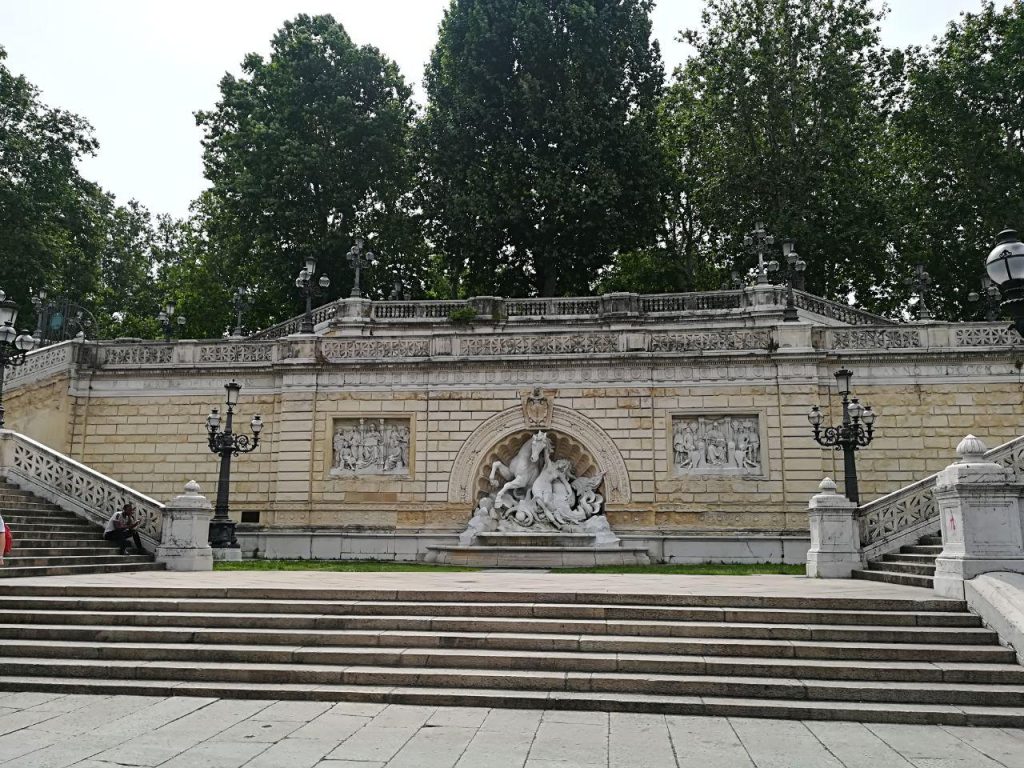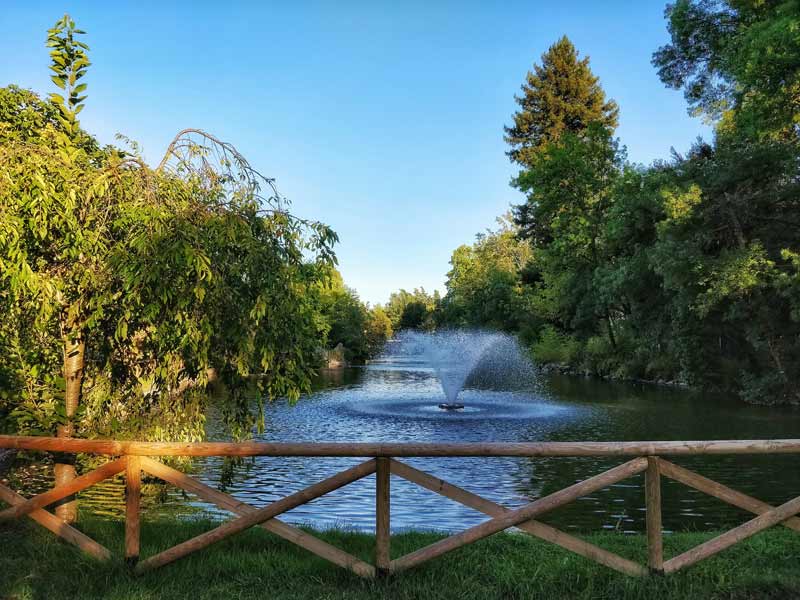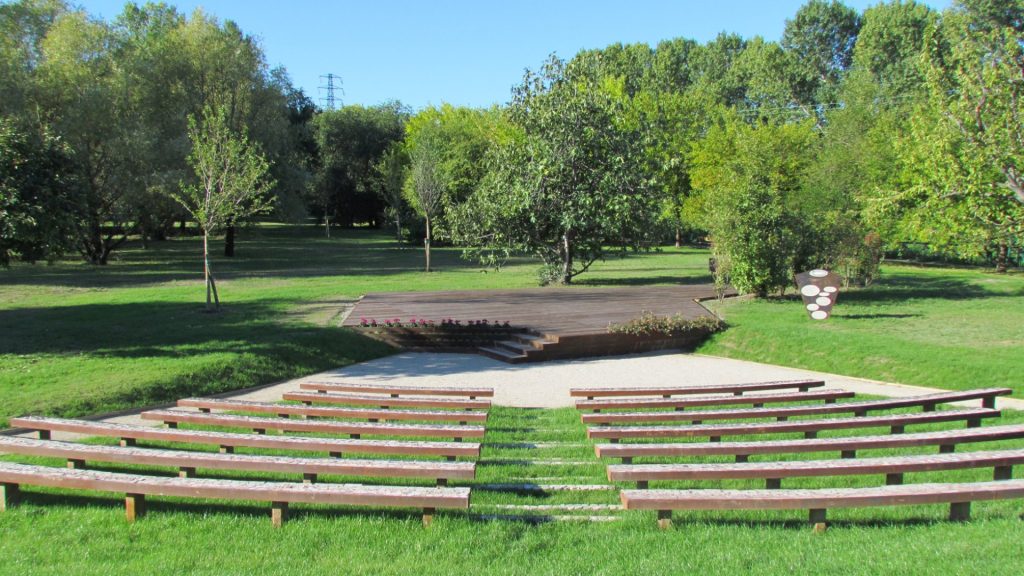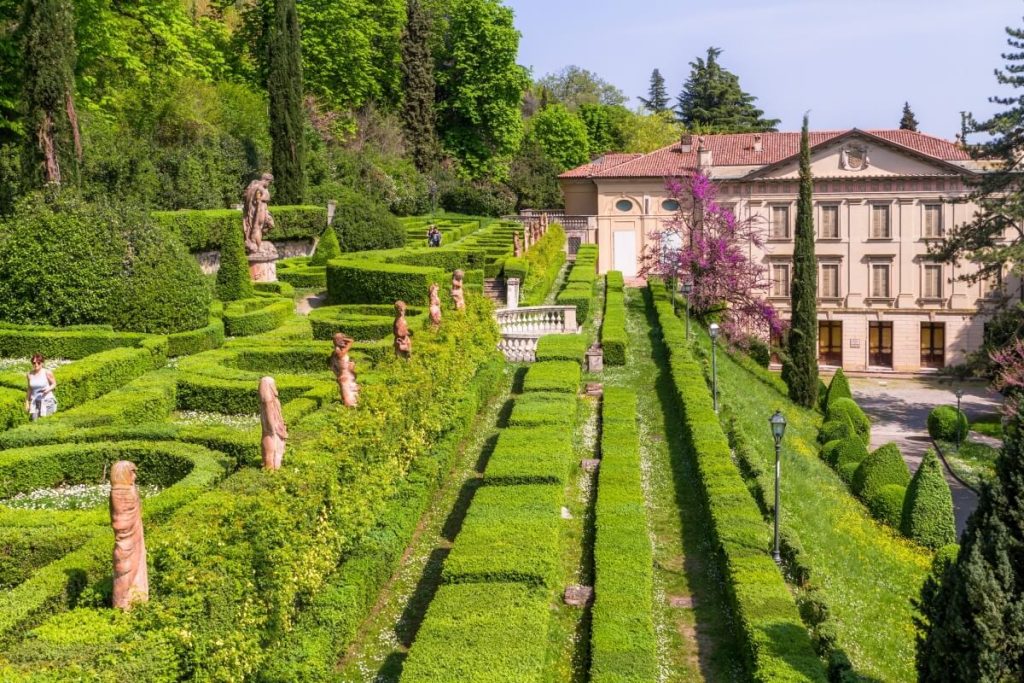Summer days are perfect for a nice walk or an afternoon lying on the grass immersed in nature. So let’s discover some of the parks you can enjoy throughout the city center and up the first Bolognese hill, surrounded by plants, history, and interesting details.
La Montagnola
This park can be found in the city center and has a history rooted in the 17th century. Montagnola Park is located along the Irnerio and Indipendenza streets and is one of the oldest green areas in the city.
The area was originally used as a dumping site for the accumulation of rubble and waste, but in the 1600s it was earmarked for public use. The park we see now dates back to the 19th century when Napoleon arrived in the city. At the end of the century, in 1896, it also received one of its most distinctive features: the Pincio staircase facing Porta Galliera. The vast spaces of the park also include a circular basin with sculptures by Diego Sarti, created in honor of the “Esposizione Emiliana” (Emilian Exposition) in 1888.
I Giardini Margherita
The concept for Giardini Margherita was born in the 19th century when new ideas about city structure began to focus on improving the living conditions of citizens. What better solution than a park with elegant walkways and 26 hectares of land?
The Gardens were inaugurated on 6 July 1879, the same year that the Municipality decided to name the park after Queen Margherita of Savoy, consort of King Umberto I, who had come to visit the city the previous year. The park’s construction, based on the English garden, was entrusted to Count Ernesto Balbo Bertone di Sambuy. A small lake was also planned, fed by the waters of the Rio Cavallina, and subsequently nicknamed “Fossa” (the ditch) due to the scarcity of water. During construction, the remains of an Etruscan necropolis were also brought to light and the park still includes two reconstructions of Etruscan tombs.
Parco di Villa Angeletti
This park is located a few meters from Bologna’s central station, in Via Carracci, and is spread over 8.5 hectares along the right bank of the Navile canal.
Perfect for peaceful walks just a short distance from the city center, the park takes its name from a Villa that became an important center for agricultural research and experimentation in the 1930s, though nothing remains of the building due to bombing during World War II. After the war, the land (owned by the Bologna Savings Bank) was donated to the Municipality, which transformed it into a park that the whole city enjoys to this day.
Parco di Villa Ghigi
Heading towards the hills, but not too far from the city center, you will find Villa Ghigi and its park. This panoramic point is on the first Bolognese hill, shortly after Porta San Mamolo, and offers a splendid view of Bologna.
One thing that makes this park so special and popular, in addition to the wonderful view, is the extensive network of walking paths for anyone who wants to enjoy some hiking.
Though the Villa has been uninhabited for some time, you can still see the caretaker’s house (adjacent to the Villa) as well as the farmsteads of Palazzino (headquarters of the Villa Ghigi Foundation) and Becco.
The park has several entrances that can be found in Via San Mamolo, Via Martucci, and Via Gaibola.
Parco di Villa Spada
You will find the entrance to this park, and its approximately 6 hectares of greenery, in Via Saragozza. It extends along Via di Casaglia and is home to Villa Spada, now the Museum of Textiles and Upholstery. The large space of the park displays a wide variety of vegetation, including several Mediterranean evergreens (holly oak, cypress, laurel oak, domestic and maritime pine, and strawberry trees), as well as a semi-natural grove with typical hillside species.
The Villa was built at the behest of the Zambeccari family at the end of the 18th century in neoclassical style by Gian Battista Martinetti. According to legend, Ugo Bassi was imprisoned inside the neo-medieval turret before his execution by firing squad.
Do you know other parks?
Share them with us at ufficio.stampa@succedesoloabologna.it
Discover Bologna with us








